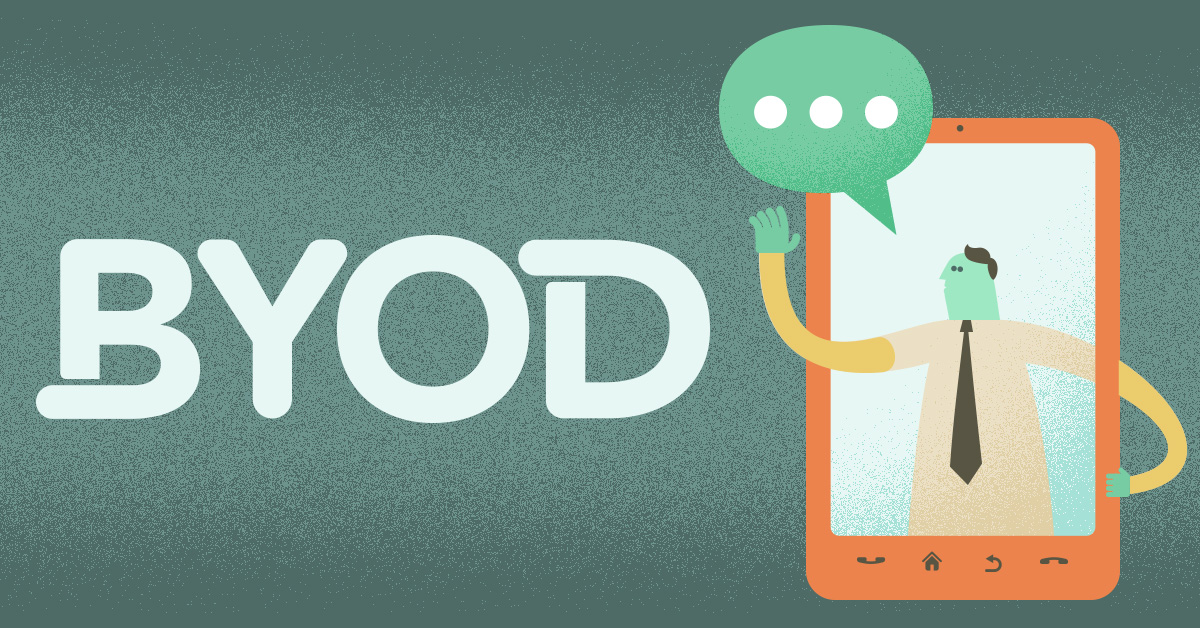 How are you reading this article right now? If you’re using your own personal smartphone, tablet, or laptop, you may be part of a growing trend called BYOD.
How are you reading this article right now? If you’re using your own personal smartphone, tablet, or laptop, you may be part of a growing trend called BYOD.
BYOD, or “bring your own device,” allows employees to use their personal mobile devices for professional purposes. It’s a rapidly growing trend with several benefits and challenges that could permanently change your work environment.
Who’s Using It?
According to research from mobile communications consulting firm iGR, small- and-medium-sized businesses are leading the charge for BYOD in the US. As of 2013, more than 60% of small and medium businesses had an official BYOD policy. And a Cisco study of 600 US IT and business leaders showed that 84% of respondents allow employee-owned devices, and even provide some level of support.
Benefits of BYOD
BYOD has likely caught on in so many workplaces because of the myriad of benefits it offers to employers and employees, including greater innovation, improved flexibility, and higher productivity. In fact, a survey from BMC Software found that employees who partake in BYOD typically work an extra two hours and send 20 additional emails per day. Furthermore, when Intel implemented BYOD across their 17,000-employee workforce, it resulted in 1.6 million hours of productivity gain.
And the Challenges
However, BYOD comes with a unique set of challenges. Employers will need to carefully decide if BYOD is a good fit, or if their teams work better with company-issued or subsidized devices. It is also in employers’ best interest to create an official BYOD policy that covers employee accountability, as well as security and data risk issues.
Potential costs are another challenge. Even though employees provide their own devices, employers may need to pay for additional bandwidth. And last year, the California Court of Appeals held in Cochran v. Schwan’s Home Service that employers must reimburse employees who use their personal phones for work purposes, whether or not those employees have plans which include unlimited minutes.
Is It Right For Me?
When, where, and how we work is constantly evolving. Today, it feels like those practices are changing faster than ever. Whether or not BYOD fits your workplace, it’s an important trend to be informed about. We’ve included some additional links below to help you decide where your company should stand on this topic.
Looking for more ideas on how to connect with your workforce? RSW can help.
SOURCES USED IN THIS ARTICLE:
http://www.inc.com/comcast/byod-byoa-a-growing-applicable-trend.html
http://blog.voxer.com/2014/09/15/six-ways-byod-increases-enterprise-productivity-and-profits
http://newsroom.cisco.com/release/854754/Cisco-Study-IT-Saying-Yes-To-BYOD
http://www.hrmasia.com/content/byod-user-you-work-longer
http://www.vtzlawblog.com/uploads/file/Cochran%20v_%20Schwan’s.PDF
http://www.email-marketing-reports.com/wireless-mobile/smartphone-statistics.htm





